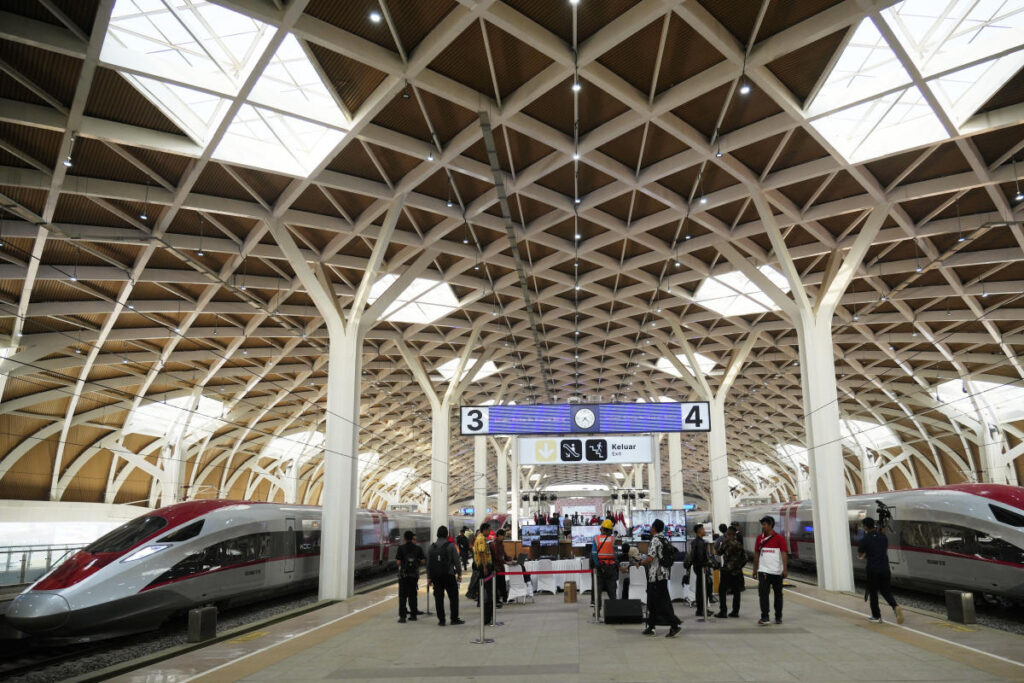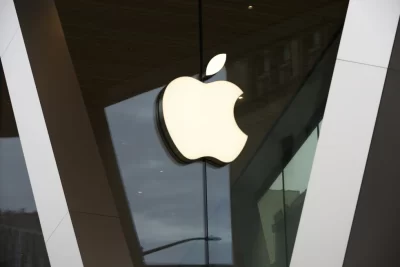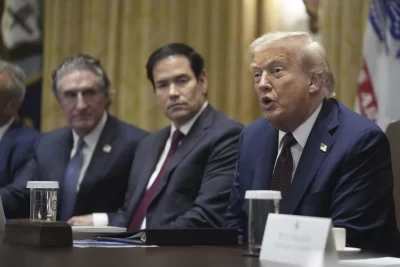
China is touting its 10-year-old Belt and Road Initiative as an alternative model for economic development, releasing a government report that praises the program while glossing over criticism that it has saddled poor countries with too much debt.
The program championed by Chinese leader Xi Jinping has financed construction of ports, power plants, railroads and other projects around the world.
“Over the past 10 years, the fruitful results of building the Belt and Road together and the growing circle of friends have fully proved that the Belt and Road does not engage in a closed and narrow circle, transcends the old mindset of geopolitical games and creates a new paradigm of international cooperation,” Li Kexin, the Foreign Ministry’s director for international economics affairs, told reporters in Beijing.
Since it was launched, the Belt and Road Initiative, or BRI, has backed projects carried out mostly by Chinese construction companies, financed by loans from Chinese development banks.
Its official goal is to boost trade and investment by improving China’s transport links with the rest of the world. Analysts credit the program with directing needed funding to poor countries but say that came at a cost.
“On some level, China has added a World Bank to the developing world, and that is no small feat and very appreciated by developing countries,” said Kevin Gallagher, the center’s director.
But the same study noted that many recipients of Chinese loans are now struggling with their overall debts. Also, Chinese-funded power plants are emitting about 245 million tons of carbon dioxide a year, adding to emissions of climate altering greenhouse gases.
The Chinese government report highlighted railway projects including a 590-kilometer (370-mile) route from Nairobi to the port of Mombasa in Kenya and the opening of a 1,035-kilometer (643-mile) railway in 2021 from the city of Kunming in southwestern China to the capital of Laos.
China filled a gap as the World Bank and other lenders pulled back from infrastructure projects because criticism of their impact on the environment and displaced local communities, Gallagher said.
But China in turn has come under similar criticism and is now shifting its initiative toward a new focus that includes smaller projects and renewable energy.
“We do not have these massive multimillion dollar infrastructure projects anymore, but rather smaller projects, the official term is ‘small and beautiful,’ ” said Christoph Nedopil, the director of the Asia Institute at Griffith University in Australia.
They include solar and wind farms, factories to make electric vehicle parts and batteries and mines for lithium and other minerals needed for electric vehicles, Nedopil said.






